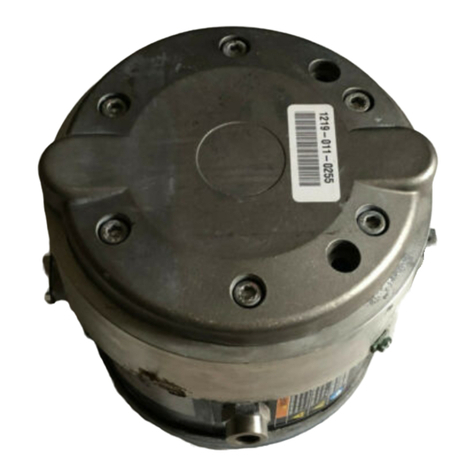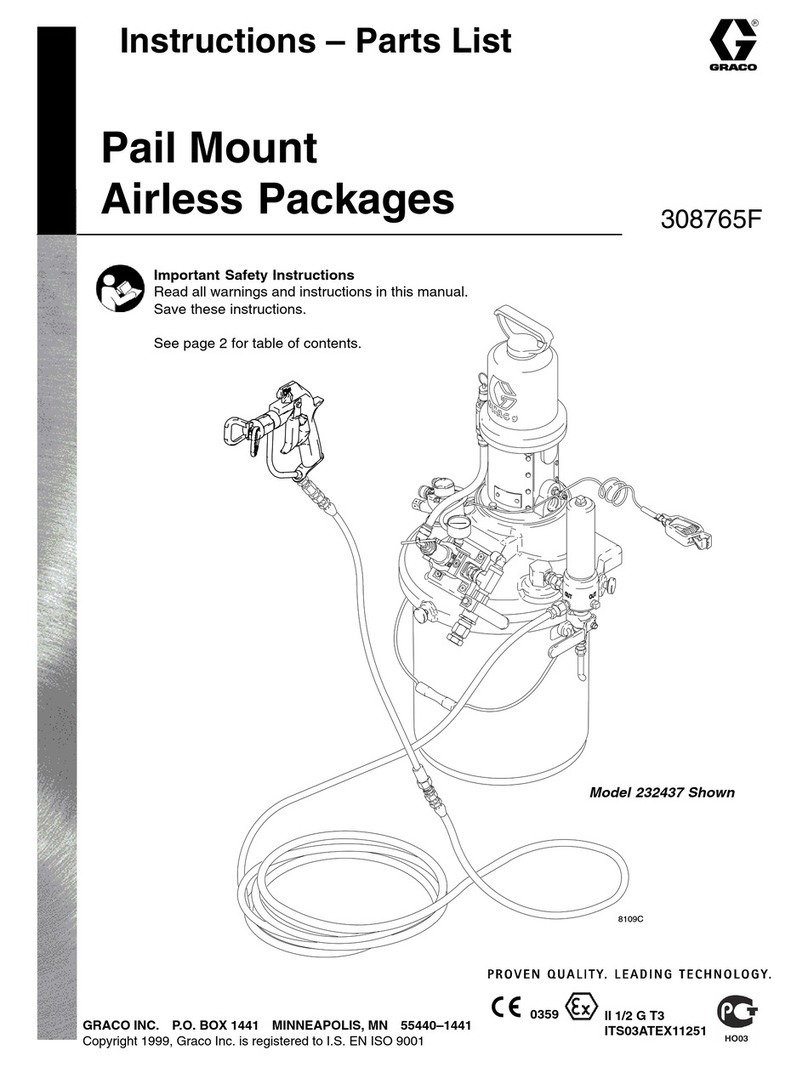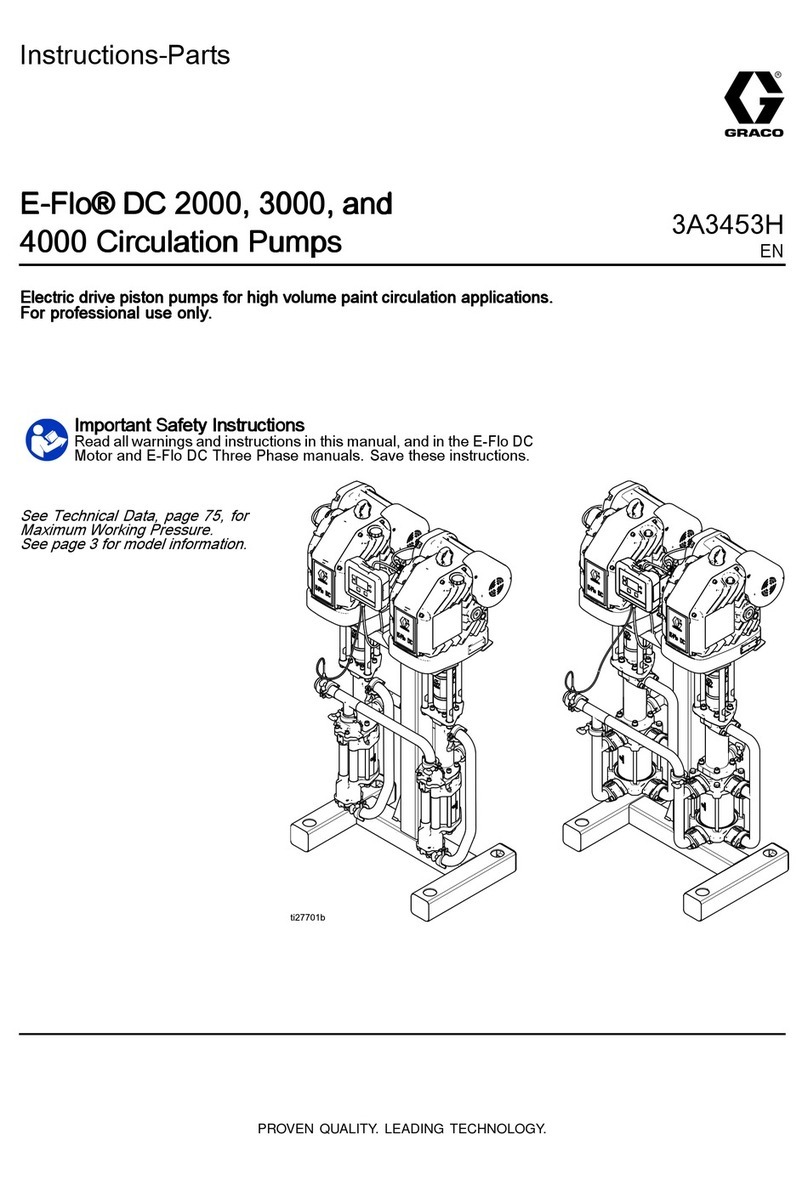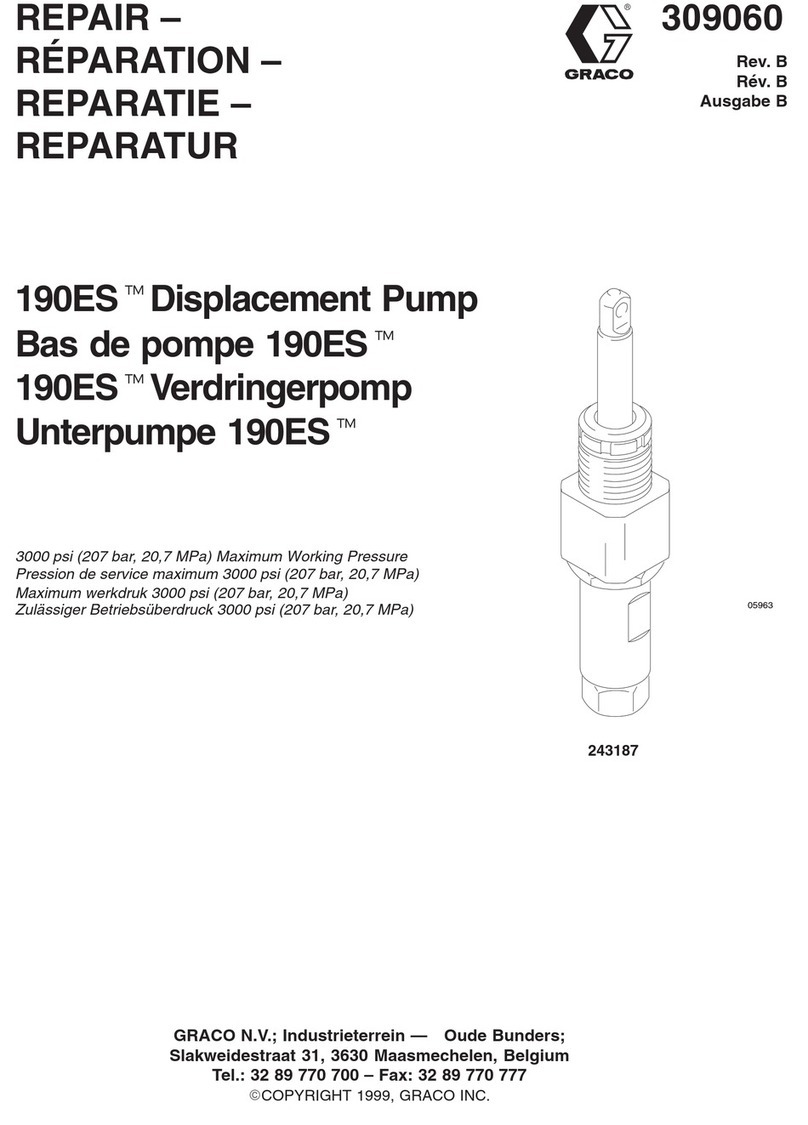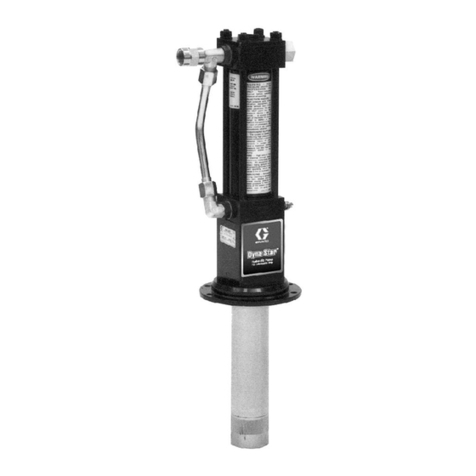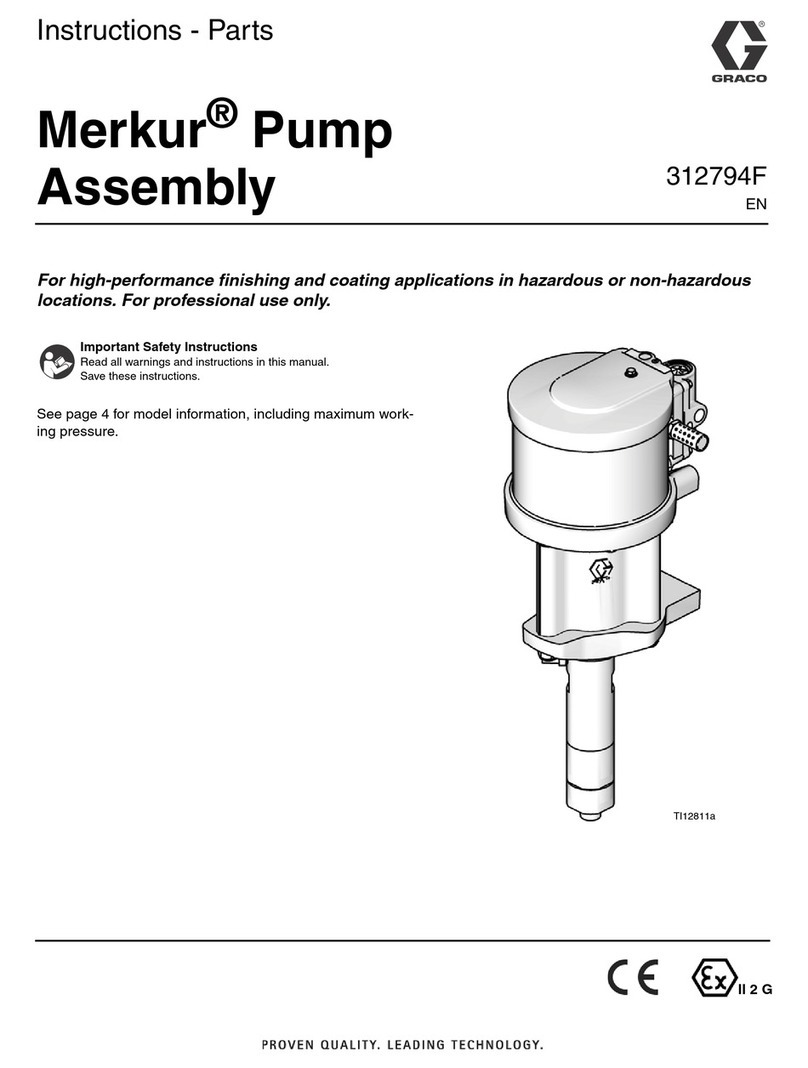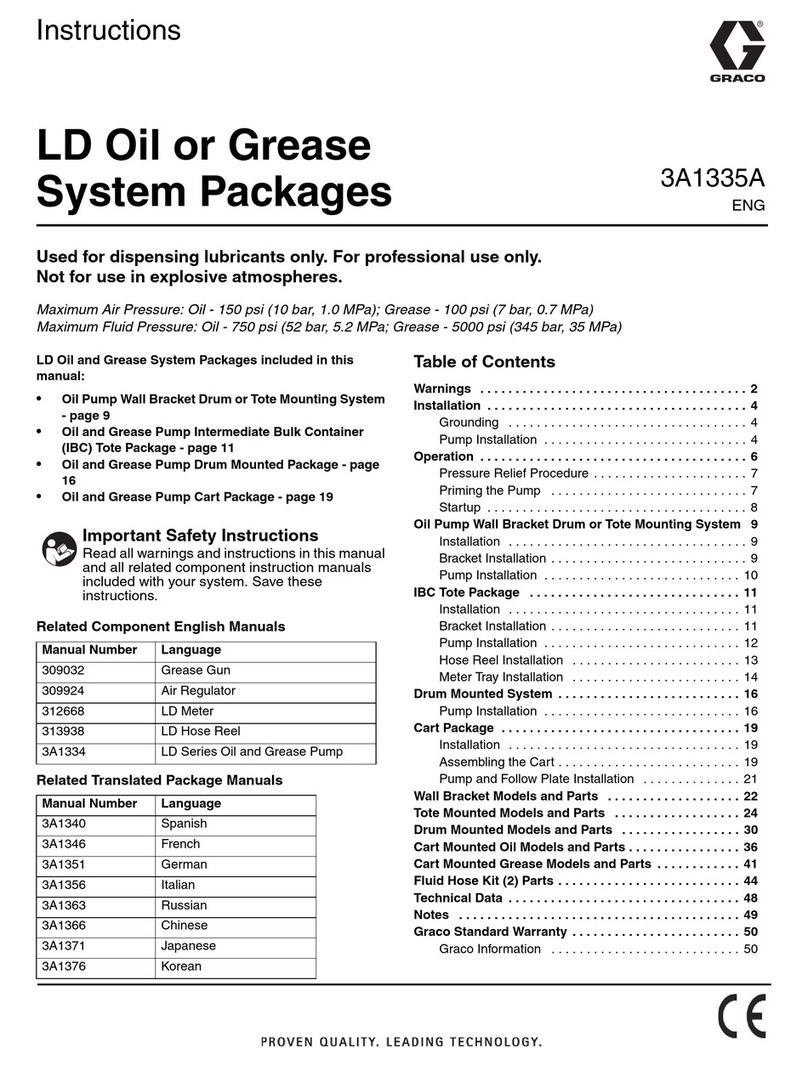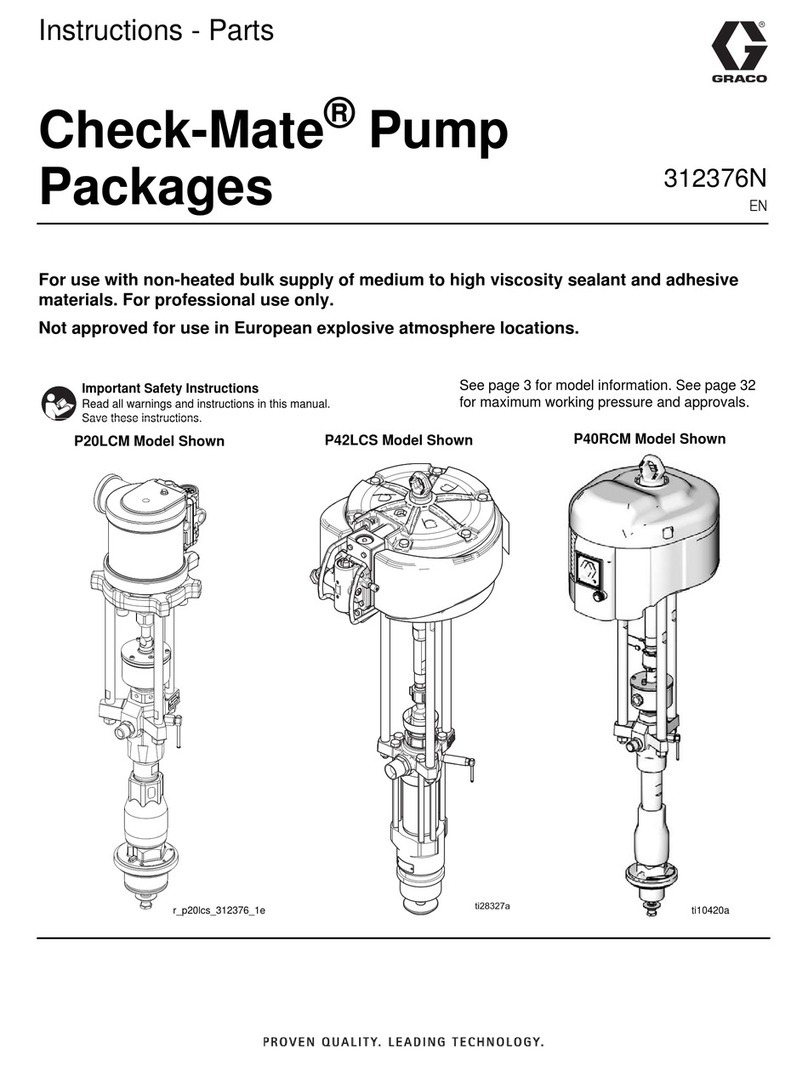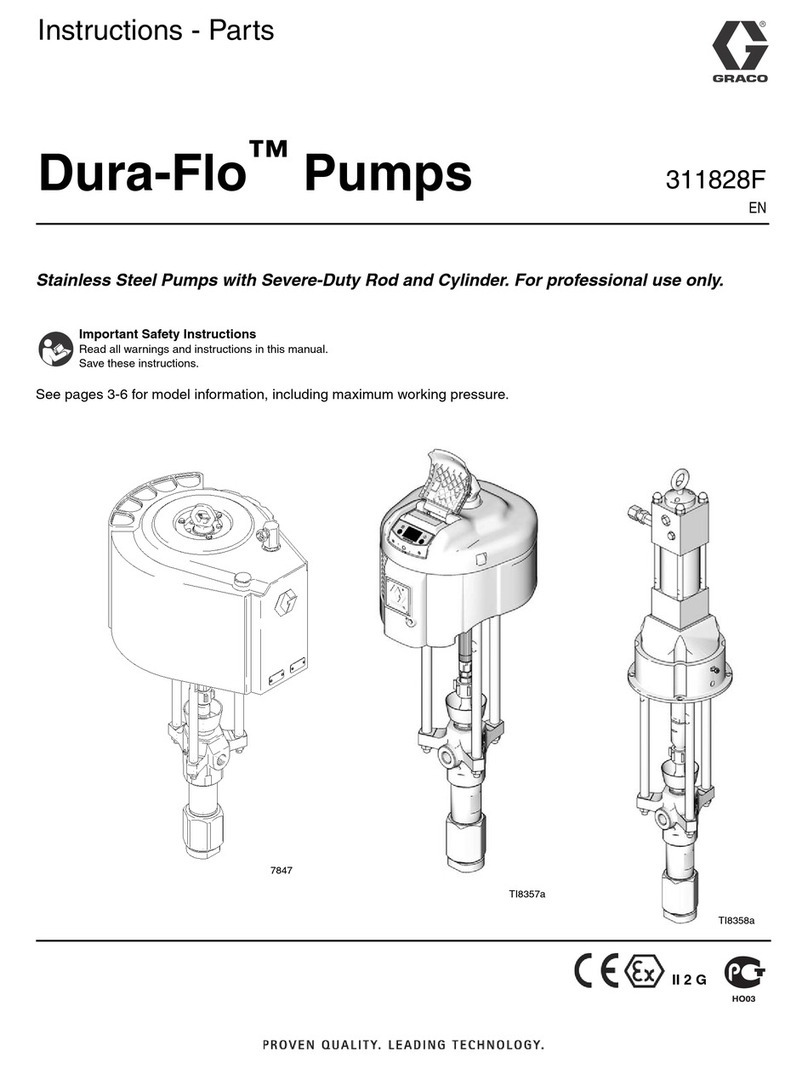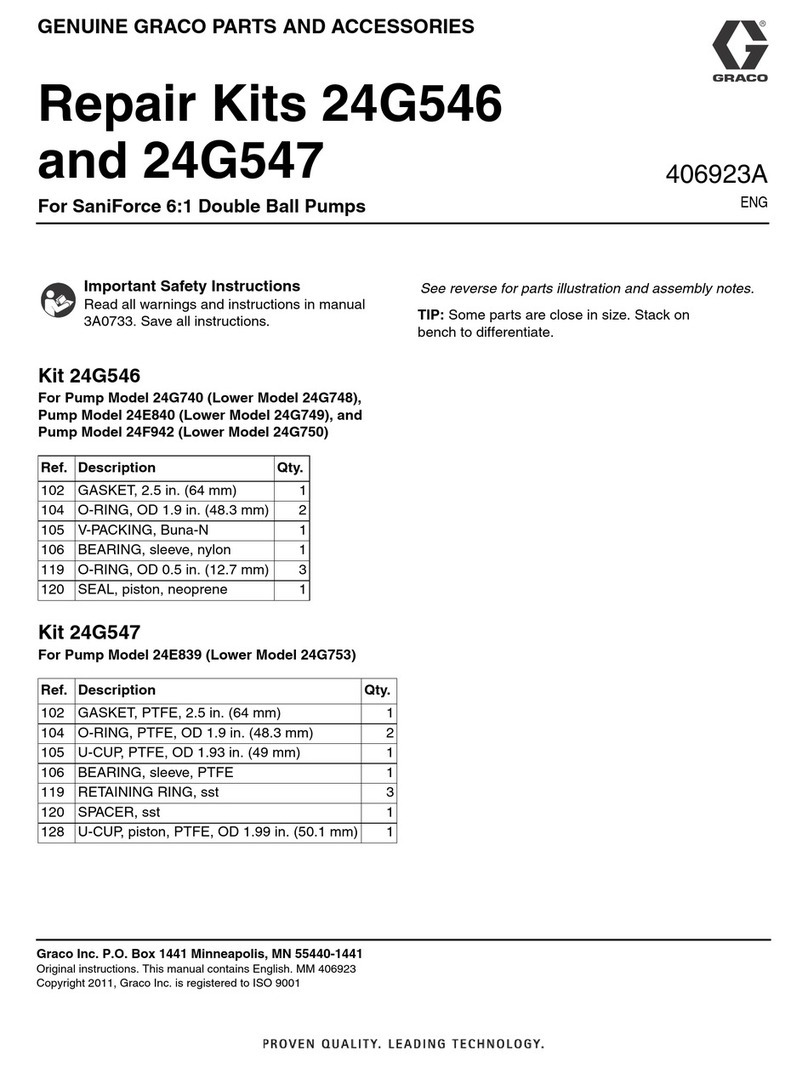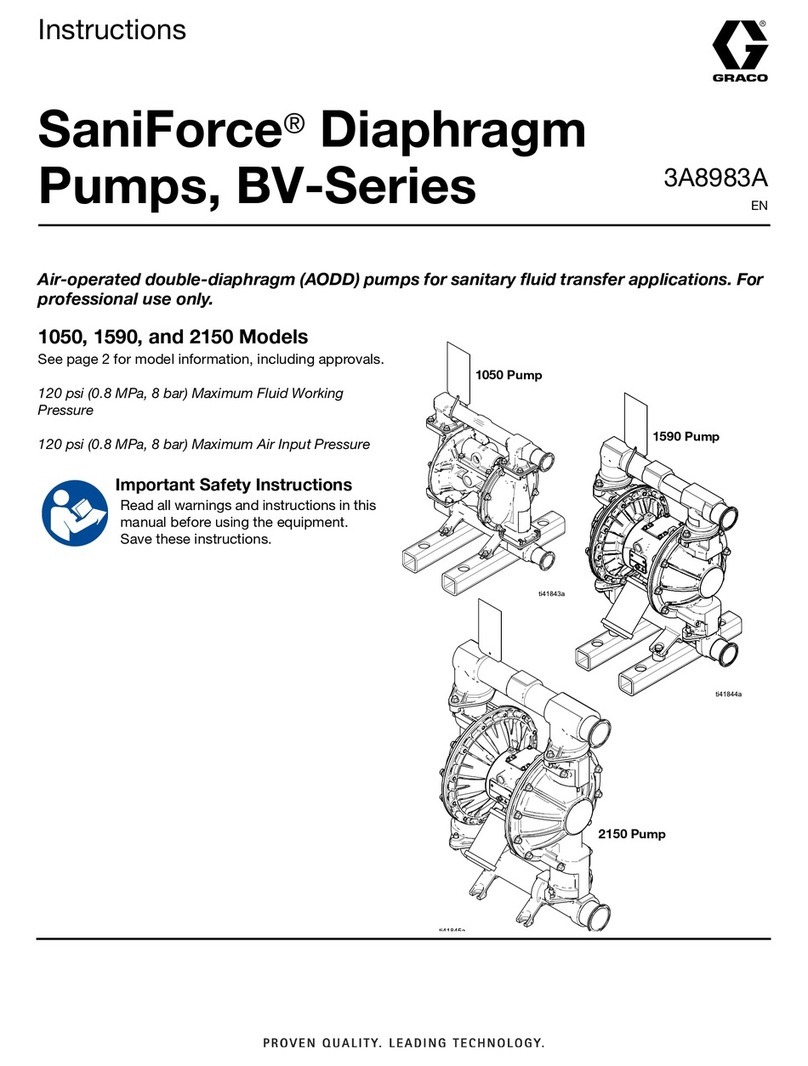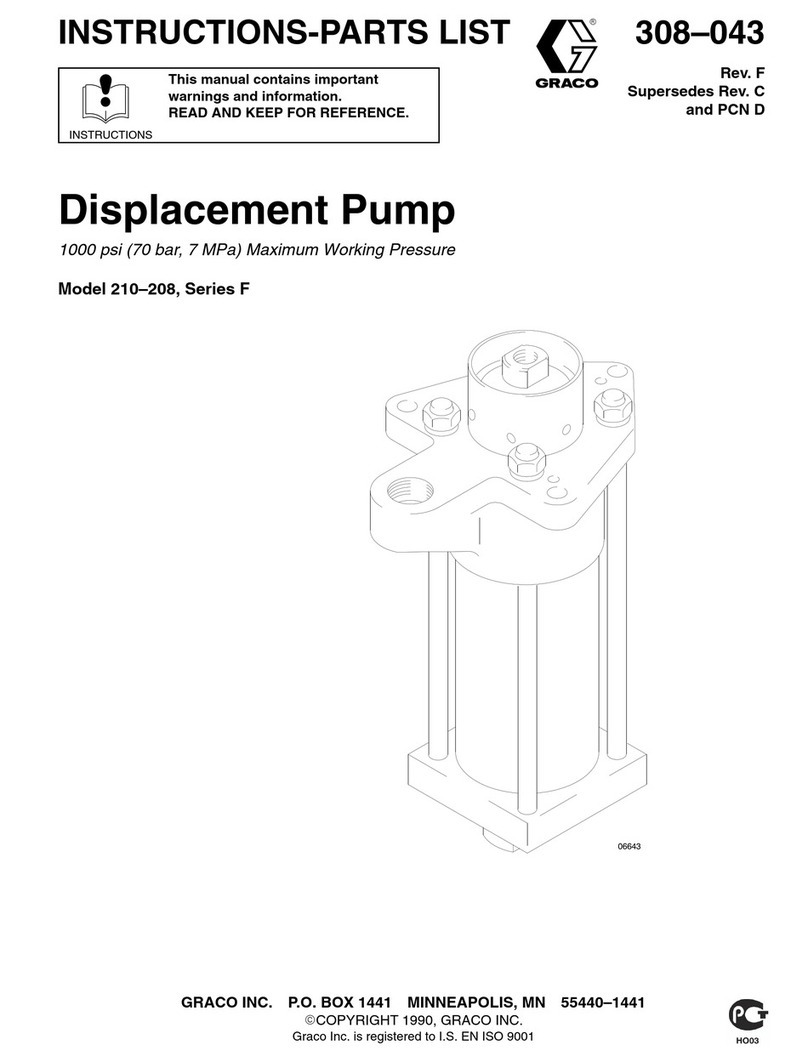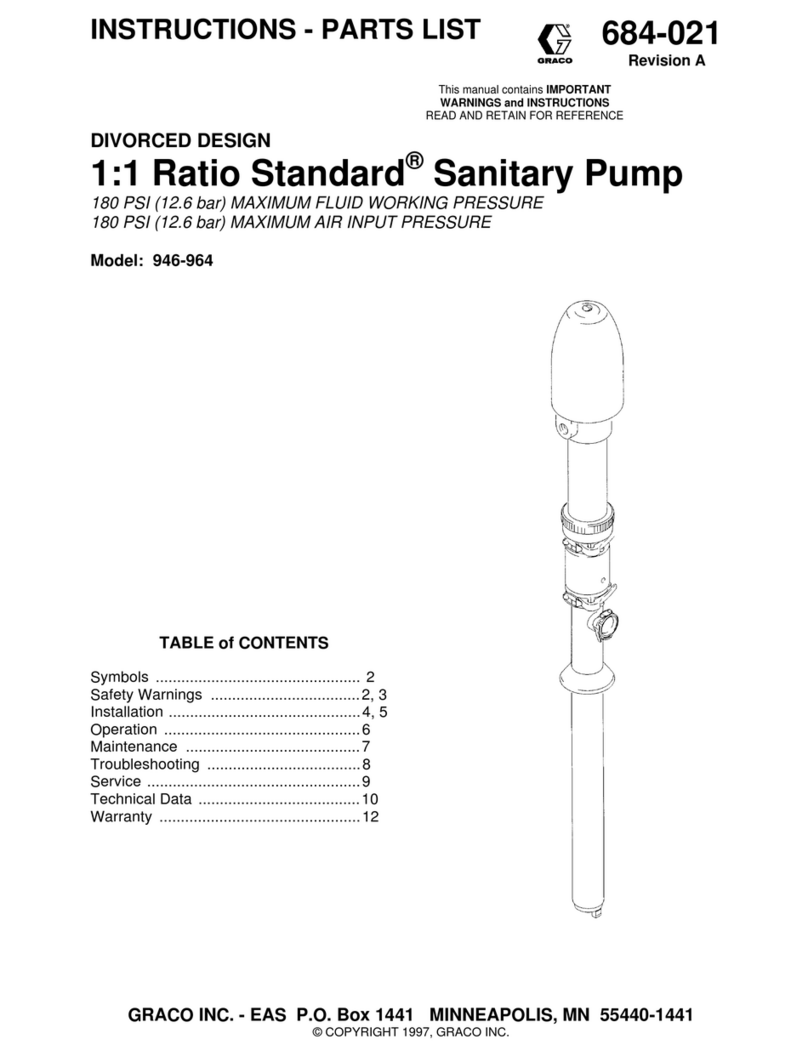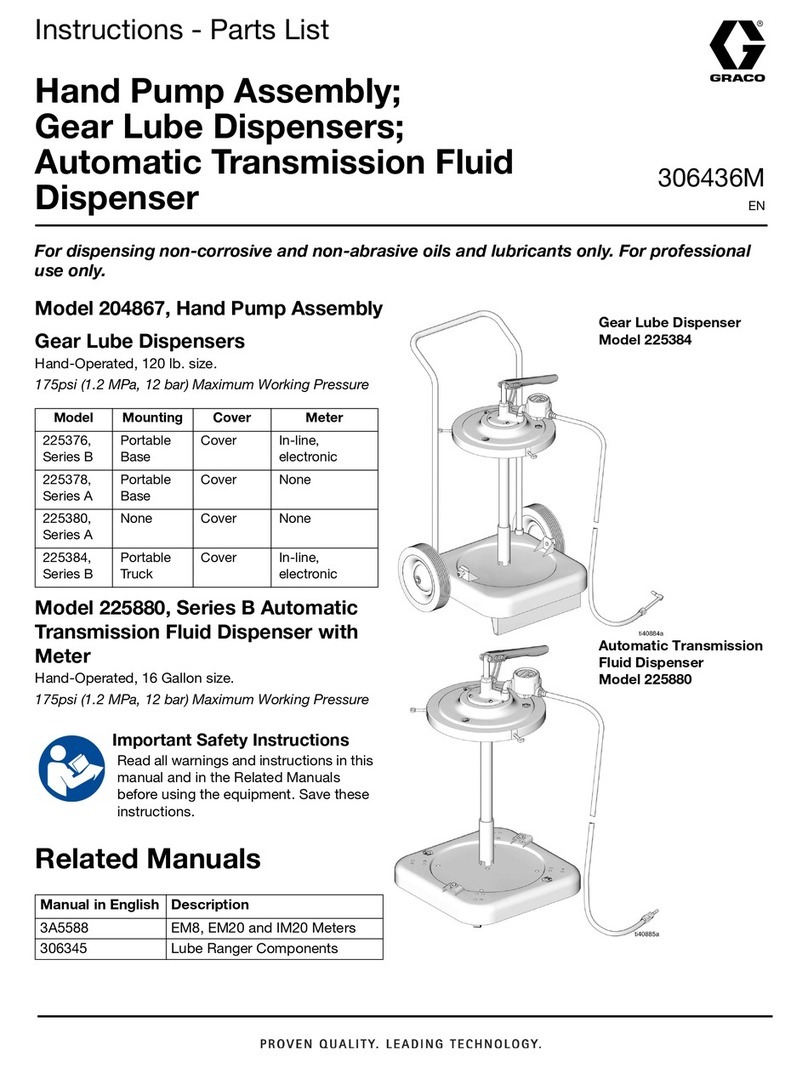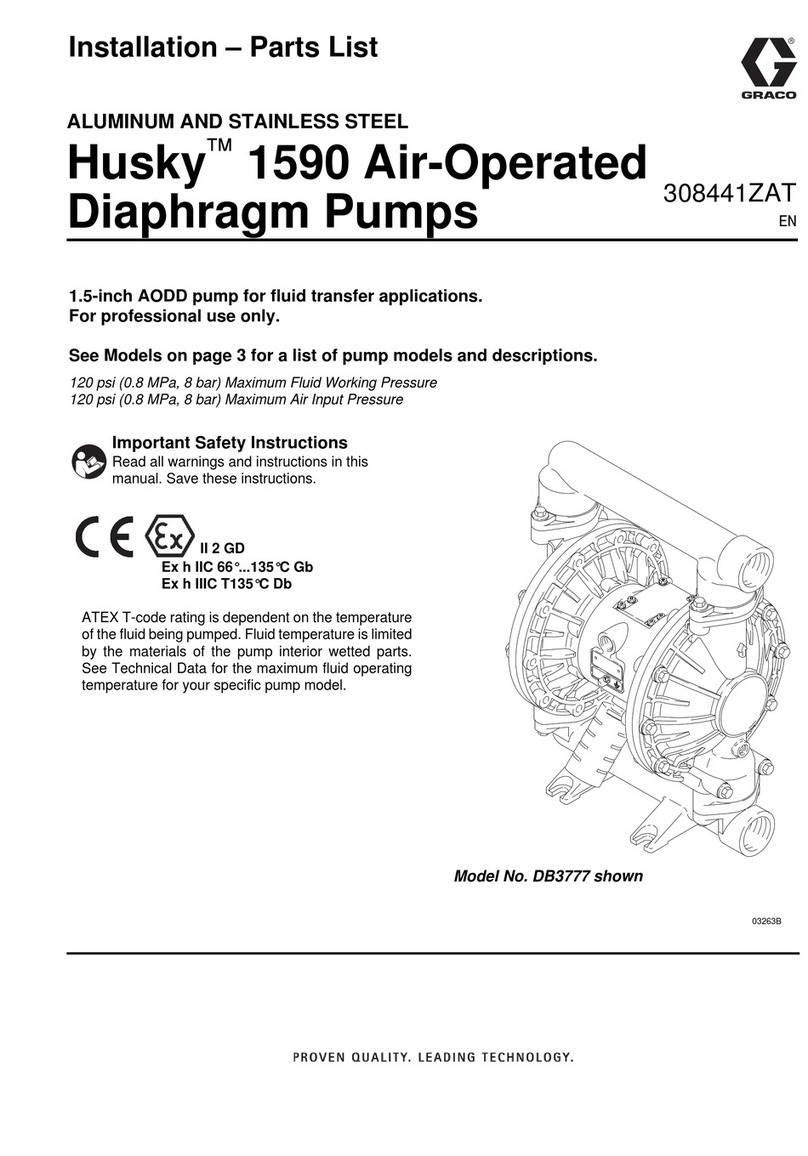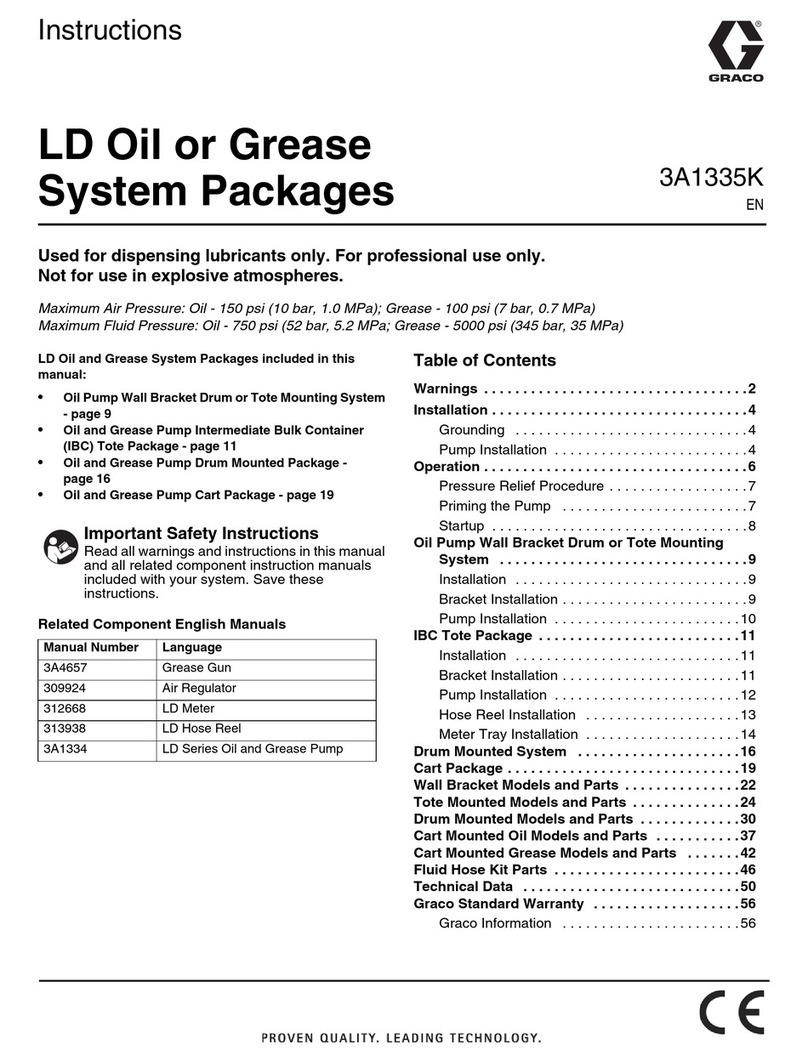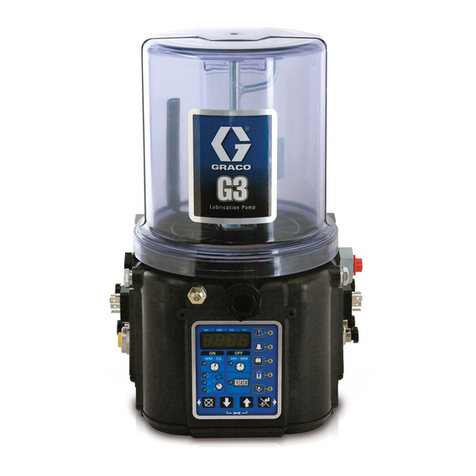
308147 9
Installation
(AIR-POWERED PUMPS)
SYSTEM ACCESSORIES
WARNING
A bleed-type master air valve (E) and a fluid drain
valve (M) are required in your system. These
accessories help reduce the risk of serious injury,
including fluid injection and splashing of fluid in the
eyes or on the skin, and injury from moving parts if
you are adjusting or repairing the pump.
The bleed-type master air valve relieves air trapped
between this valve and the pump after the air is
shut off. Trapped air can cause the pump to cycle
unexpectedly. Locate the valve close to the pump.
The fluid drain valve assists in relieving fluid pres-
sure in the displacement pump, hose, and gun.
Triggering the gun to relieve pressure may not be
sufficient.
Air and Fluid Hoses
Be sure all air hoses (H) and fluid hoses (N and P) are
properly sized and pressure-rated for your system.
Use only electrically conductive hoses. Fluid hoses
must have spring guards on both ends. Use a whip
hose (P) and a swivel (R) between the main fluid hose
(N) and the gun/valve (S) to allow freer gun/valve
movement.
Mounting Accessories
WARNING
For Model 222939 Premier Pump, do not lift the
pump by the lift ring when the total weight exceeds
550 lb (250 kg).
Mount the pump (A) to suit the type of installation
planned. Fig. 3 illustrates a wall-mounted system.
Pump dimensions and the mounting hole layout are
shown on pages 36 and 37.
If you are using an elevator or a cart, refer to the
separate manuals supplied with those components for
installation and operation instructions.
Air Line Accessories
Install the following accessories in the order shown in
Fig. 3, using adapters as necessary:
DAn air line lubricator (D) provides automatic air
motor lubrication.
DA bleed-type master air valve (E) is required in
your system to relieve air trapped between it and
the air motor when the valve is closed (see the
WARNING above). Be sure the bleed valve is eas-
ily accessible from the pump, and is located
downstream from the air regulator.
DAn air regulator (F) controls pump speed and out-
let pressure by adjusting the air pressure to the
pump. Locate the regulator close to the pump, but
upstream from the bleed-type master air valve.
DApump runaway valve (C) senses when the
pump is running too fast and automatically shuts
off the air to the motor. A pump which runs too fast
can be seriously damaged.
DAn air manifold (G) has a swivel air inlet. It
mounts to a wall bracket, and provides ports for
connecting lines to air-powered accessories.
DAn air line filter (J) removes harmful dirt and
moisture from the compressed air supply.
DA second bleed-type air valve (K) isolates the air
line accessories for servicing. Locate upstream
from all other air line accessories.
Fluid Line Accessories
Install the following accessories in the positions shown
in Fig. 3, using adapters as necessary:
DA fluid filter (L) with a 60 mesh (250 micron)
stainless steel element, to filter particles from the
fluid as it leaves the pump. It includes a fluid
drain valve (M), which is required in your system
to relieve fluid pressure in the hose and gun (see
the WARNING at left).
DA gun or valve (S) dispenses the fluid. The gun
shown in Fig. 3 is an airless spray gun for light to
medium viscosity fluids.
DA gun swivel (R) allows freer gun movement.
DA suction kit (T) allows the pump to draw fluid
from a 200 liter (55 gallon) drum.
